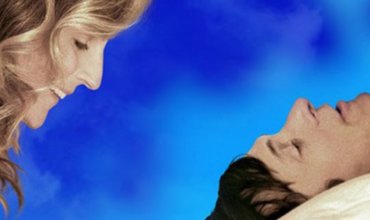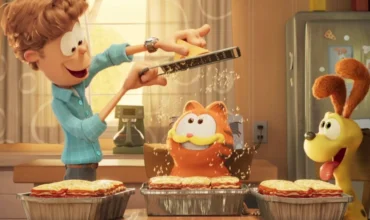Taking a step back (or perhaps forward) from his action-packed bloodbath 13 Assassins (2010/11) Japanese director Takashi Miike brings us the subtle, character-driven tragedy Hara-kiri: Death of a Samurai.
Clearly Takashi Miike has a thing for unemployed samurai – though while the jobless warriors in 13 Assassins found gainful employ through enlistment to bring down a sadistic lord, Hara-kiri spins a more tragic yarn.
‘Hara-kiri’ defined: ‘An honourable ritual suicide by self-disembowelment on a sword, practiced by samurai in the traditional Japanese society’. Yeah, you see where this is going.
Seeking a noble end, poverty-stricken samurai Hanshiro (Ebizo Ichikawa) requests to commit ritual suicide at the House of Li. In an attempt to dismiss Hanshiro, the House of Li’s head honcho recounts the tragic story of a similar recent plea from a young ronin. But Hanshiro himself has more to add to the tale… and so the broad tapestry begins…

A remake of the 1962 movie Harakiri, Miike was attracted to the reboot due to the unrelenting relevance of human suffering:
“What excites me about resurrecting this film from the past is being able to feel firsthand the existence of the universal human suffering which Hara-kiri: Death of a Samurai depicts at it’s core as it transcends time, genres and countries” Miike explains.
While I would hardly call intense suffering “exciting”, Miike certainly succeeds at it’s realistic and intriguing portrayal, offering a subdued yet stately film, driven by depth of character and emotion.
The acting is impressive with a stand out performance by Ichikawa (who also looks fabulous in his Jedi-like samurai robes and has a hairdresser to die for).
Shot in 3D, the visuals achieve a restrained elegance. Reading the word ‘samurai’ in the title, and with 3D glasses in hand as you enter the cinema, it is easy to assume you are in for a blood-squirting, action-heavy feast, yet the 3D is seemingly used only to add a literal depth to the story as action scenes are almost non-existent.
It is a slow-burn film, with the pieces gradually coming together to a powerful, but hardly climactic, conclusion. Patience is required that’s for sure (and a naturally sunny disposition wouldn’t hurt either or else risk feeling depressed for the rest of the day after seeing it.)
The exploration of ‘honour’ and it’s place in Japanese society is interesting and well-developed however, as with all foreign films, we as ‘outsiders’ can only fully understand a few of the many culturally-specific layers to the story. No doubt there are more nuances my ignorant ‘Western’ self did not recognise.
A picky viewer (such as myself) may spot one or two props/costumes that look too modern for 17th Century Japan, and the drama does teeter on the edge of being a little soap opera-ish at times, yet ultimately it is a great film that offers a brilliant storyline, satisfyingly complex characters and pretty visuals.
Hara-kiri: Death of a Samurai may not offer the same excitement as 13 Assassins, yet it is undeniably a well-made film and the fact that it is getting an Australian release is to be applauded.
I rate it 6 out of 10 stars.
Hara-kiri: Death of a Samurai is released in Australia March 21st






